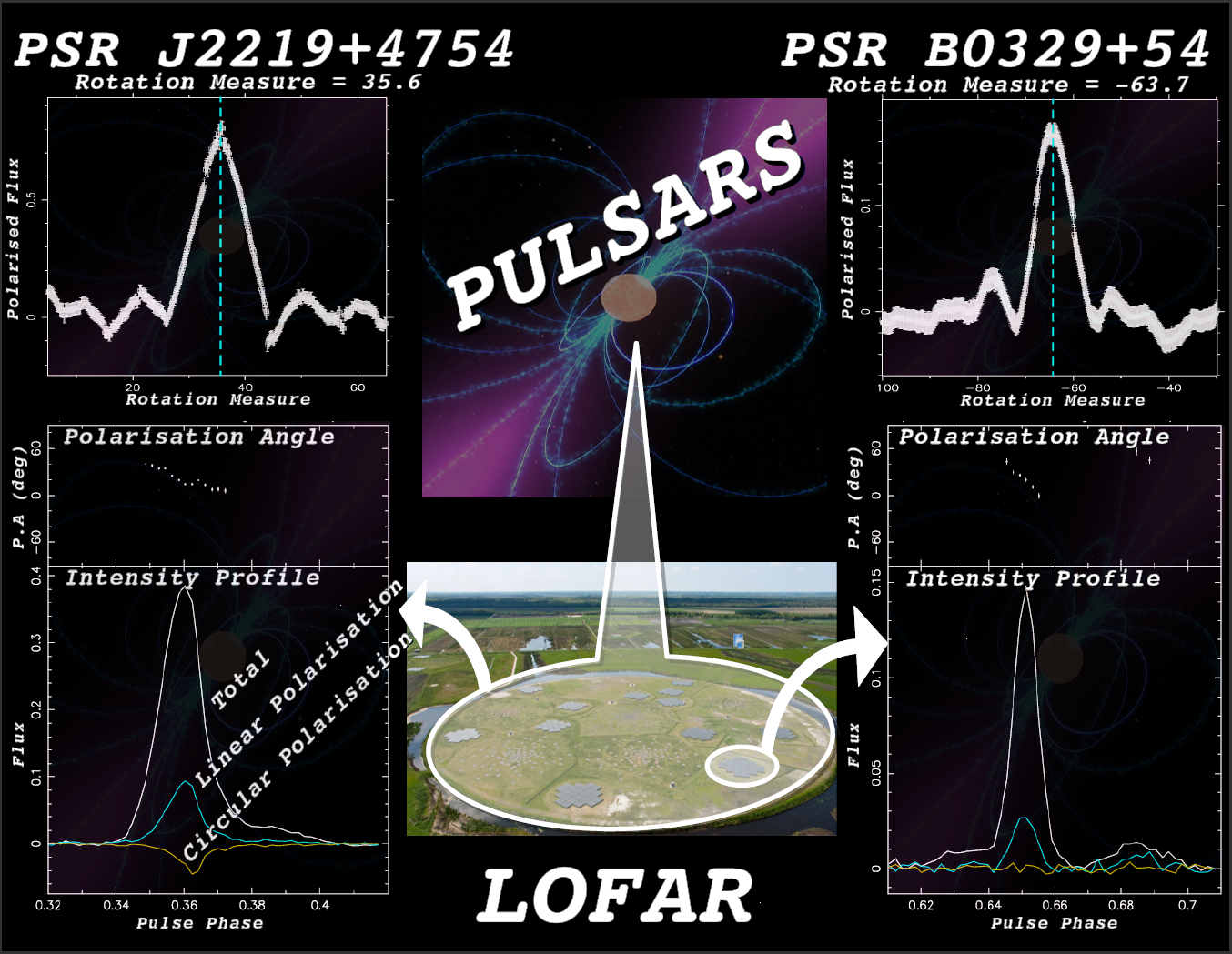Daily Image
16-02-2011First Pulsar Polarisation Profiles with LOFAR
| Submitter: | Charlotte Sobey, Aristeidis Noutsos, Joris Verbiest, Masaya Kuniyoshi, LOFAR PWG |
| Description: | The image shows two of the very first polarisation profiles of pulsars observed with the LOFAR HBAs, those of PSR B0329+54 and PSR J2219+4754 (lower panels). It is the first time that such high-quality polarisation information is recorded at these frequencies by coherently combining the complex voltages from several LOFAR sub-stations. Although the polarisation profiles are not yet calibrated, work is being done in order to correct for the geometric and instrumental effects that affect the polarisation measurements during observation. Observing pulsar polarisation at low frequencies can give us an insight into the magnetospheric physics of pulsars. The properties of polarised pulsar emission can be combined with those from higher-frequency observations to effectively make a 3-dimensional map of the pulsar emission region. Furthermore, the polarisation angle can be used to derive the pulsar orientation in space. On larger scales, LOFAR observations of polarised pulsars can be used to probe the magnetism of our Galaxy. Measurements of the Faraday Rotation of pulsar emission, i.e. Rotation Measures (RMs), can be used to construct the large-scale structure of the Galactic magnetic field. The upper panels show how de-Faradaying the polarised signal using different RMs points us to the true RM value — the peak in polarised flux. The RMs derived are consistent with the literature values. Note however that the sign of the RM for J2219+4754 is opposite to that published; this is one of the issues that will be resolved by the polarisation calibration. Polarised observations of pulsars provide vital information that will soon be used in the calibration of every type of polarimetric observation with LOFAR. With several hundreds of pulsars available in the LOFAR sky, the next step is to find those that are strongly polarised and compile a database of polarised pulsar calibrators to serve future LOFAR observations. |
| Copyright: | ASTRON |
| Tweet |  |
